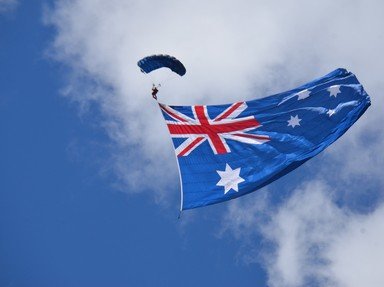Quiz Answer Key and Fun Facts
1. This Australian Test cricketer (left arm swing bowler) enlisted in the British Army and tragically contracted typhoid and died in Durban at the age of 33. Who was he?
2. I won 12 major doubles and mixed doubles titles. I was the first man to win a Grand Slam of mixed doubles titles during a year. In all my 10 major mixed doubles titles I partnered the same lady. Who am I?
3. I was born in Bendigo VIC and captained the Australian Test team, but when I played my last Test match I had settled in England and I played for England as my adopted country. I was a wicket-keeper and my highest first-class score was 321. I was the first cricketer to score a double century in a Test match. Who am I?
4. The Melbourne Cup was traditionally run over two miles. However, in 1972 it was converted to the metric distance of 3,200 metres. How many metres short of the two miles is this?
5. Ironically I was born in Williamstown (a suburb of Melbourne) and I won the 1952 Melbourne Cup, two Caulfield Cups and a W.S. Cox Plate, plus Australian, Moonee Valley, Brisbane and Adelaide Cups and 13 classic races in England, Ireland and France. Lester Piggott once said of me that I was "the best big-race jockey in the world". Who am I?
6. I was born in County Cork (Ireland) and was the first Irish-born captain of the Australian Test team. After I retired I became an esteemed cricket journalist writing under the pen name of "Felix". Who am I?
7. I was named after a Scottish town but around the stables I was known as "Little Joe". I was so small that my owner said that if I was no good I could be used to round up sheep. I had 53 races for 36 wins and the only time I was unplaced was in the 1960 Melbourne Cup. Who am I?
8. I loved cross-country riding and also shot for the Melbourne Gun Club. I trained a number of Melbourne Cup winners in the 1920s and had a successful 40 year association with a supremely fit and articulate jockey. Who am I?
9. There was some confusion as to whether I was a South Australian or a Victorian when I was foaled in 1962, as the stud farm stranded the border. I had 24 wins in Australia with my last being the W.S. Cox Plate and was then sold to American interests where I won four races but never really re-captured my Australian form. I was a chestnut and was generally considered to be a weight-for-age horse. Who am I?
10. The achievements of Walter Albert Lindrum (1898-1960) are legendary in the history of billiards. However, when he was born he was given the initials of W. A. for a particular reason. What was that reason?
Source: Author
zambesi
This quiz was reviewed by FunTrivia editor
gtho4 before going online.
Any errors found in FunTrivia content are routinely corrected through our feedback system.

